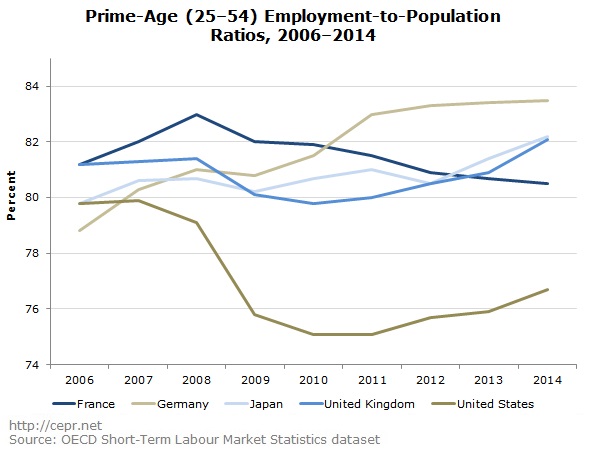May 11, 2015
In 2006, before the recession hit, there was not much difference in the employment rate for prime-age (ages 25–54) workers in the United States and other wealthy countries. The employment to population ratio (EPOP) for prime age workers in the United States was 79.8 percent. That was slightly below the 81.2 percent rate in France and the United Kingdom, but slightly above the 78.8 percent rate in Germany.
However, the recession has seriously altered the patterns of employment of prime age workers. According to the latest OECD quarterly data, Germany and Japan both now have EPOPs for prime age workers that are well above their pre-recession levels, at 83.4 percent and 82.6 percent, respectively. The EPOP for prime age workers in the U.K. has risen slightly to 82.3 percent, while it has fallen slightly to 80.4 percent in France.
By contrast, the EPOP for prime age workers in the United States fell sharply during the downturn and has only recovered about half the ground it lost. At 77.2 percent, the EPOP for prime-age workers in the United States is well below the levels in the other four major economies and is more than six percentage points behind the EPOP in Germany.
This indicates either that prime-age workers lost interest in working over the last eight years for reasons that were not present elsewhere, or alternatively, that we have a serious problem of inadequate demand in the United States.







